Shropshire's finest ...

It was founded by J. G. Bradshaw towards the end of the nineteenth century, opening in the autumn term of 1892 at Packwood in Warwickshire with just five boys and one assistant master. For the next forty-eight years, the school gradually grew until, in 1940, when the original school building was requisitioned by the RAF, it moved to its current location at Ruyton XI Towns in Shropshire. In its new location, Packwood soon established itself as one of the country's leading prep schools.
Academic achievement has always been of major importance; from the very early days, scholarships were achieved to many of the major public schools and, over the years, regular awards for sport, music, art and drama have been added to the list.
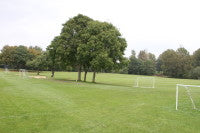
Driving through the high gates of the school and into the visitors car park, my eyes were immediately drawn to an impressive herbaceous hedge-lined garden bursting with colour. I was here to meet the school's Head Groundsman, Phil Mold, who has been at the school nearing sixteen years. Phil was keen to show me around 'his' grounds and, once I had been supplied with my official visitors badge, we headed off to walk around the site.
I was very impressed at the size and topography of the school grounds and how well the natural landscape features support the school's curriculum activities, with the school making good use of woodlands, paddocks, rivers and natural pasture fields.
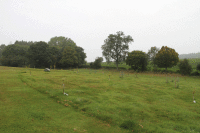
The copse was officially opened on 23rd June 2014 when all of the children and members of staff gathered together. Phil commented; "Everyone walked across the grounds in absolute silence, and it was a moving and humbling moment to witness these young people respond so thoughtfully and to see that they understood that this was the right and proper behaviour."
A memorial plaque was unveiled and the junior children laid the poppies they had made earlier in the day. The names of those who had died were read out and labels bearing their names were attached to each of the twenty-three oak trees.

Autumn term starts in September, after the summer holidays, with pitches set up for football, hockey, lacrosse and rugby. After Christmas, the winter term sees the pitches set up for rugby and lacrosse.
The spring term sees a continuation of rugby and lacrosse, whilst the summer term is predominantly set up for cricket and athletics. The school also has a nine-hole golf course that meanders all the way through the school grounds.
"The golf course was the vision of the headmaster at that time, Mr Patrick Jordan who, as a keen golfer, asked one of the groundstaff in 1988 to create a small green for him to practise his chipping," explained Phil.
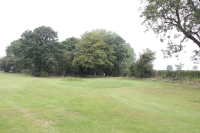
"The layout needed to be thought out carefully, so that children could play on the course whilst other sporting activities were going on. The course, therefore, skirts the perimeter of the school grounds with holes ranging from 110 yards to two longer holes of 290 and 350 yards running alongside the river Perry."
"The greens were basically all cut out of the predominant ryegrass sward, which was not ideal for a fine turf sport. However, each September, the greens are renovated in line with traditional methods, which sees some light scarifying, solid tine aeration, overseeding with a creeping red fescue mix and topdressed with 100% sport sand."
"The seed mix we use on the greens is specifically selected because the height of cut is no lower than 7mm. I find that this suits us very well as cutting lower encourages more problems, especially as we have no irrigation."
"I usually apply a 7:3:20 organic fertiliser in early spring, at 100gms per square metre, which helps to increase the soil bacteria and control moss. In summer, a light dressing of 8:0:0 nitrogen fertiliser is applied, devoid of phosphates in order to discourage poa annua."
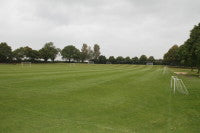
Most of the sports pitches are laid down on the school's natural grassland pastures, which they inherited when they took over the farm. The soils are a predominantly sandy loam medium, which is fairly free draining and that helps to keep the pitches in good condition, especially during the winter months.
In total, the natural grass areas provide enough room for seven football pitches, five rugby pitches, two lacrosse pitches and three cricket squares. These are complemented with a full size artificial pitch, artificial cricket practice net areas and tarmac tennis courts.
Phil has two full time members of staff; Elliot Coomansingh (3 years) is his Assistant Groundsman and Geoff Morris (14 years) is the Head Gardener.
Geoff spends the majority of his time looking after all the formal gardens, shrub beds, herbaceous areas, lawns, allotments and borders but will, when required, help out if additional work is required on the sports fields.
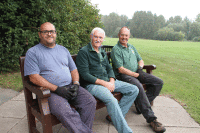
Mowing is undertaken with either a triple mower, a set of five trailed gang mowers or a Kubota rotary deck mower. Most of the grass and pitch areas are cut using the trailed gang mowers pulled behind their trusty old Massey Ferguson 362 tractor.
These areas are cut twice a week at around 40mm, thereby ensuring they can cut more quickly and reduce the amount of grass clippings left on the ground. "The mowing of the pitches is ongoing," commented Phil, "and certainly keeps us busy along with all the other works that go on; for example, it takes a good day to mark out all the sports pitches."
When time allows, Phil does like to use the Ransomes 36" Mastiff to help present the football pitches, but preferring to produce a good surface for the pupils to develop their skills and play decent football. Phil is also a qualified FA football coach and helps out with coaching of the school teams.
The summer term is a very busy time, with cricket, athletics, golf and other summertime activities to cater for; Phil will often work long hours, either coming in early or staying over to complete jobs. This is made easy by the fact that he lives on site.

The team has two fine turf mowers; a Protea 630 and Lloyds Paladin, which are used to prep cricket squares and pitches and cut the golf greens.
Phil explained: "The cricket pitches are made up of two main squares, seven wickets on the senior square and the same on the Under 11 square. In addition, the school has five grass nets and four artificial strips plus two extra Under 10/11 wickets on Wykey Field."
"Similar to the birth of the golf greens, the main squares were not constructed to the normal methods, i.e. excavation, base and a consolidated 100mm of cricket loam etc. To my amazement, the renovations of years gone by were carried out with dressings of sugar beet washings; predominantly sand/silt! Obviously, the standard of wickets, based on these previous dressings, was not good, and would not improve."
"My solution has been to apply heavier dressings of Surrey 125 Gostd loams, which has a high clay content of approximately 28-30%, which has improved the tracks slowly but surely. We have the added problem of a slight slope on the senior square, which isn't ideal, even if we had the luxury of raised covers."
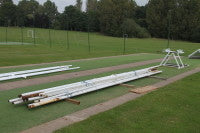
Remember, we were not dealing with a conventional construction and soil transfer could work, although we did expect a more unpredictable ball reaction."
However, the squares are renovated each autumn, firstly cutting in four or five directions using our Protea 630 mower and finishing with the Lloyds Paladin to remove as much foliage as possible, without scalping. This is then followed by several passes with the Protea pedestrian scarifier to a depth of 6mm. The debris is mown off and the grooves cleaned out using our Sisis scarifying machine with a brush reel attachment, coupled with a final clean out using a leaf blower."
"The square is then overseeded with a mixture of four ryegrass cultivars, followed by topdressing with six 25kg bags of GOSTD 125 per strip, which is hand luted into the profile, followed by drag brushing."
"I then apply an autumn/winter 3:6:8 feed to promote some growth whilst soil temperatures remain favourable. We then erect temporary fencing to protect the square, mainly from our pesky rabbit population."

As for machinery maintenance, Phil explained that they try to service and repair most of the equipment themselves, however, they do have a local contractor who will come in and undertake any major repairs and also carry out end of year servicing and sharpening of mowers.
Phil and his staff do a remarkable job and are extremely proud of their work. As for their wish lists, Phil would like to update their mowing fleet with newer, more efficient mowers. A larger rotary deck mower would be a good asset, along with a ride on triple and new fine turf mowers.
Phil also hopes to be able to take on a couple of apprentices, which would allow them to achieve so much more and continue to improve the quality of the pitches.
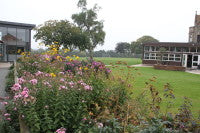
Phil and Geoff have dedicated their lives to the school and set some high standards. As is often stated, the first impression of any school is the presentation of the school grounds and facilities. Being a groundsman is not just about cutting grass, it is the attention to detail, the passion to produce decent facilities week in week out in all weathers, often with little resources and understanding.
Credit where credit is due, Phil, Geoff and Elliot must be applauded for their hard work and endeavour to present the school in such a positive way, both on and off the field of play.
